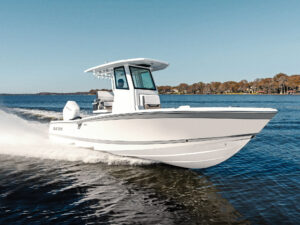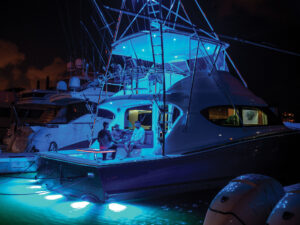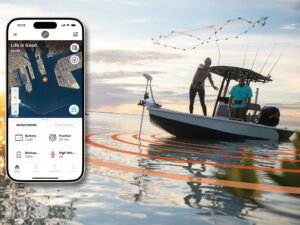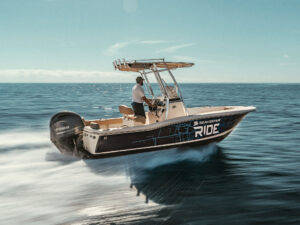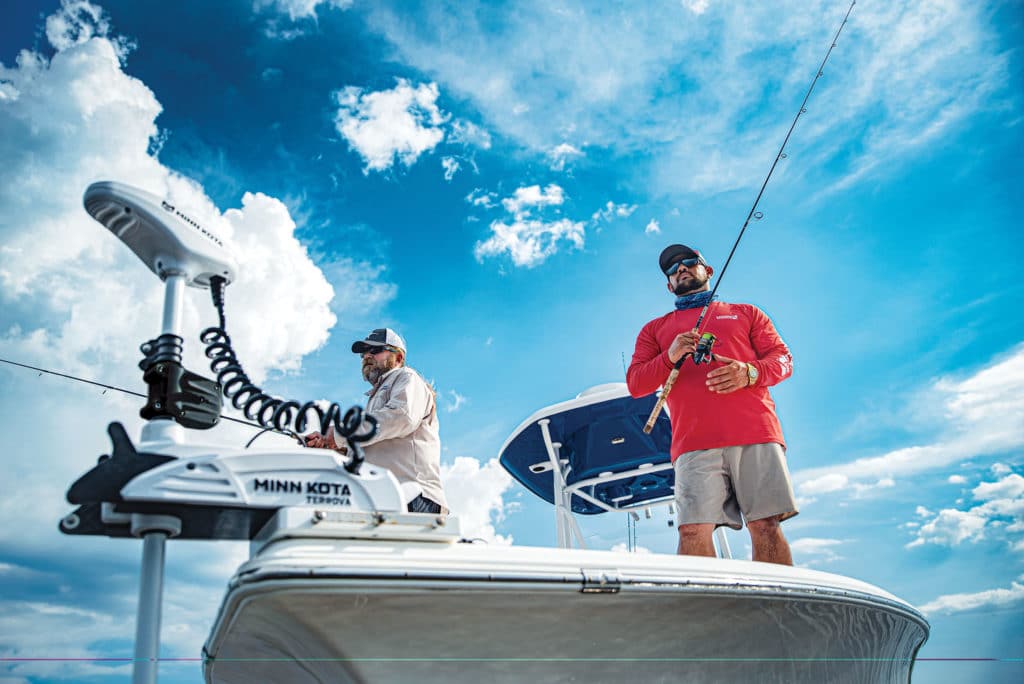
Today’s makers of fishing boats and gear suffer from iPhone syndrome: They want to make the on-water experience as seamless and fun as playing with a new app. And in many ways, they’re succeeding.
During the past few years, we’ve seen everything from offshore trolling motors, digital electric steering and boat-control systems to assisted-docking software deliver the ultimate ease in navigation and station-keeping. Among those innovations, the two products that rank highest for anglers include the heavier-duty, longer-shaft trolling motors that can battle strong currents and manage waves, as well as DES, which opens up new possibilities for joysticks and dialable trolling speeds.
Slo-Mo Control
Finally, more offshore anglers can enjoy what most inshore fishermen have long relished: pinpoint GPS-guided boat -control and the ability to hover quietly over a fishing spot—at a lower price tag than outboard-engine control systems.
Rhodan Marine and Minn Kota have rolled out electric motors with shafts measuring 84, 87 and even 96 inches—available for boats in the 40-foot range with bows towering 6 feet, 2 inches above the waterline.
“It’s good for every type of fishing,” says Rhode Island captain B.J. Silvia, who runs a Parker 25 sporting a Minn Kota Riptide Terrova with an 87-inch shaft and 112 pounds of thrust. “Like for big stripers when you don’t want to drive over what you’re casting into. If I need a stealth approach with live bunker, I go on the trolling motor. Throwing plugs into rocky areas, I can go up to the rocks with the trolling motor.”
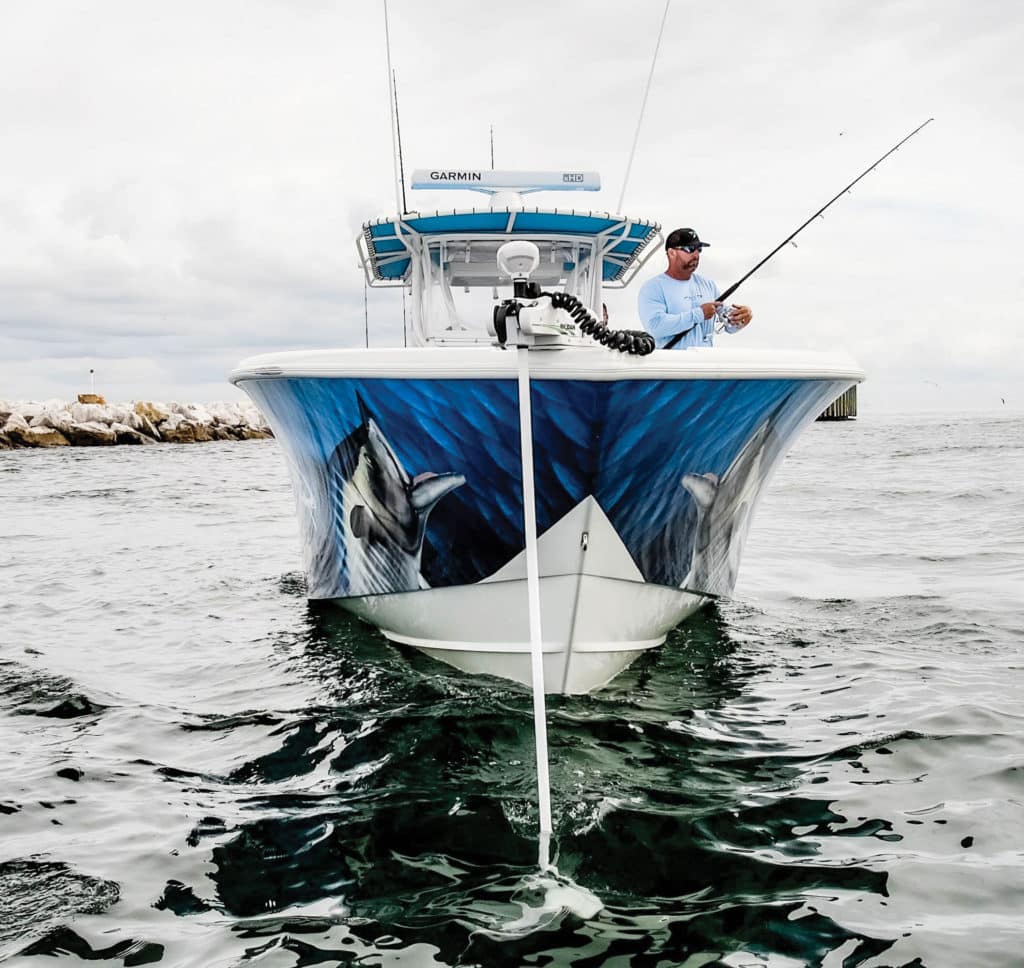
Silvia adjusts the drift speed with a remote control. If he needs to hover, he engages the Minn Kota’s Spot-Lock feature. That function becomes key for species such as tautog; he can settle above a spot, and his angler can fish vertically.
Capt. Jason Stock charters his Yellowfin 31 out of Bradenton, Florida, and frequently uses his Rhodan trolling motor, which delivers 120 pounds of thrust and is equipped with a whopping 9-foot-long (prototype) shaft. “Even when it’s really rough, the motor will hold my 31-footer,” he says, explaining that the longer shaft normally drops the propeller 5 feet or so below the surface. “In rough conditions, of course, the motor does work harder.”
Stock says the Rhodan helps him with time management. He’s not investing 20 or more minutes in anchoring and possibly resetting every time he stops to bottomfish. “I can pull up on a spot, check out the bottom. If they’re not biting, move on to the next location,” he says.
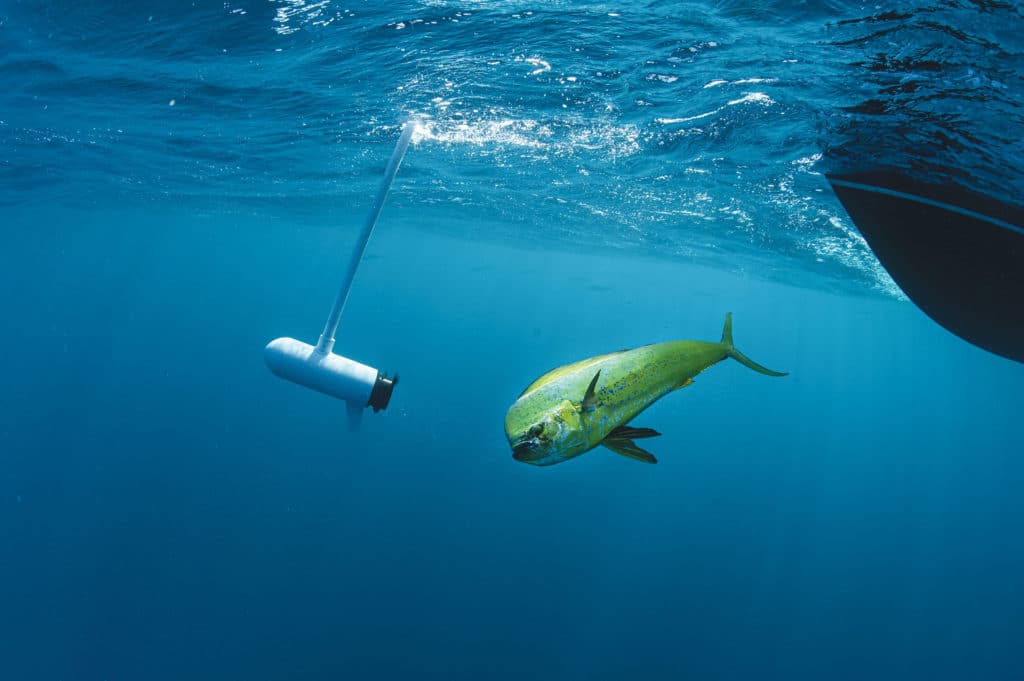
Rough Weather
Longer shafts flex more than shorter ones, and motors inherently work harder to keep boats locked in position when the seas build. “If you have a day when the wind and current are together, if it’s gusting, you use more battery life,” Silvia says. “That being said, I only had three or four days last year when the motor didn’t last the day.”
Silvia’s 87-inch Minn Kota motor draws a maximum of 52 amps. The 84- and 96-inch Rhodans draw a max of 42 amps. Amp draw measures how hard a machine must work in order to run; a higher amp draw drains batteries quicker.
These larger trolling motors operate off a three-battery 36-volt bank. Stock uses an onboard Power-Pole charger that can recharge his trolling-motor batteries when he cranks up his outboard. Such chargers—also called automatic charging relays and offered by other brands such as Minn Kota and Blue Sea Systems—sense the starting-battery charge. When the outboards’ alternators top off that battery, the available charge moves to the trolling-motor bank.
Silvia says he uses shore power and a three-bank charger that he plugs in at the end of the day. “For me, it’s a huge game-changer,” Stock says. “I use it when I’m catching bait around bridges, when I’m tarpon fishing. I can set up and [GPS] anchor so the baits aren’t drifting.”
Editor’s Tip: When installing (or having the dealer install) your trolling-motor system, be sure to place the three batteries as close to the centerline as possible, and balance the load fore and aft, based on how your boat likes to run. Depending upon how much you plan to use the trolling motor, install either an onboard charger or one that plugs into shore power at the end of the day.
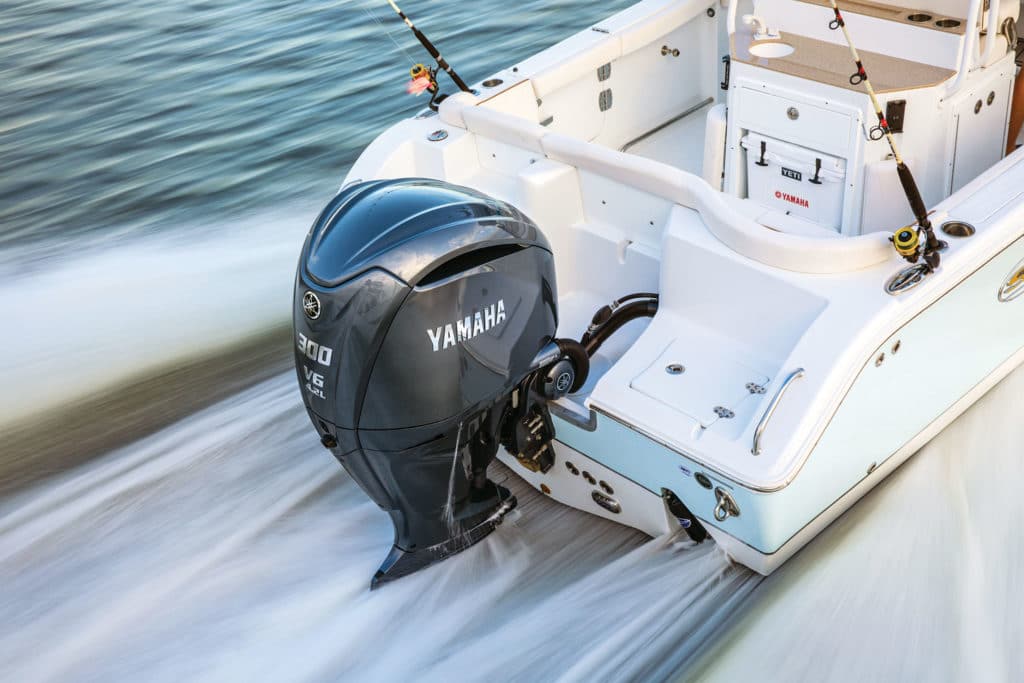
Smooth Steering
In the 1970s, many boatbuilders transitioned to hydraulic steering, then in 2012, to electrohydraulic—or power-assisted steering—particularly for larger vessels. In 2019, Yamaha changed the paradigm, delivering digital electric steering built into its 425 XTO outboards.
Yamaha worked on DES in conjunction with SeaStar Solutions (now Dometic Marine). Today, both Yamaha and Dometic offer DES options for outboards as small as 150 hp; Dometic’s Optimus outboard electric-steering actuator works with all major outboard brands.
But what can DES do for fishermen, and why should they want it? DES means less equipment and weight; it’s more reliable, draws less electricity and requires less maintenance—all while delivering better steering and programmable features.
Despite those advantages, anything electric can fail. To forestall that, Yamaha built in redundancies to help ensure continuous operation, says product education manager Ry Landry. But if the boat’s electrical system somehow fails or its batteries die, captains can use an Allen wrench to loosen the actuator—the bar that houses the roller screw that pushes the engines—and manually turn the outboards.
For boatbuilders, an electric-steering system means a much simpler installation, and it easily integrates with a joystick. A Yamaha outboard with DES built into its bracket assembly—available for the XTO as well as new V-6 F250 and F300 motors—connects to the batteries and helm with a data cable. Those outboards start at $30,870.
Yamaha’s bolt-on DES accessory—for Yamaha outboards down to the F150—costs about $3,000 for the actuator and one harness, plus a few hundred more for a digital helm and additional harnesses. Installation costs vary.
Brian Dudra, an engineer and Dometic vice president, says anglers will pay about 25 percent more for an electric-steering system compared with electrohydraulic. Both companies agree that electric steering will guide the future of boating, though electrohydraulic and even cable steering won’t disappear. After all, not everyone can own an iPhone 13.
Why Digital Electric Steering?
Less equipment and weight: Having DES means no hydraulic pumps, hoses or fluid in the system. Dometic says its all-electric system on a twin-outboard boat provides 33-pound savings compared with its Optimus EPS electrohydraulic steering.
Better reliability: Eliminating hydraulics means eliminating hydraulic failure. “That’s one potential issue lost—the infamous ‘why is all that red fluid floating around my boat,’” says Ry Landry, Yamaha product education manager.
Less electrical draw: If you’re not actively steering your boat, these systems do not draw any power. That means you’ll have more amps available for other onboard electrical needs. With hydraulic systems, the pumps run continuously whenever the power is on.
Less maintenance: No inspecting seals, checking hydraulic-fluid levels or changing fluid. DES requires only periodic greasing.
Quicker, more precise steering: “The user should notice way better vessel handling and a lot more precise steering that’s a lot faster,” says Brian Dudra, an engineer and Dometic vice president. “That means more comfort and less fatigue for the driver.”
Programmable lock-to-lock and friction settings: Both Yamaha and Dometic systems offer user-controllable steering settings. For instance, if you’re docking, you can tell the steering you want four turns lock-to-lock, meaning it takes four turns of the wheel to fully move the engines side to side—a better setting for maneuverability. If you’re running offshore and don’t want that much steering sensitivity, you can program up to nine turns lock-to-lock. Lock-to-lock settings can also be made variable, based on revolutions per minute. Anglers can adjust steering friction as well. If you like your steering a little loose, you can allow for a little play. If seas build and you want more friction, you touch the gauge to change the setting.

